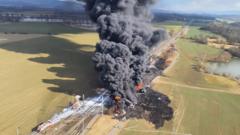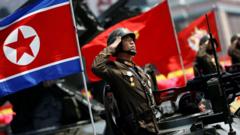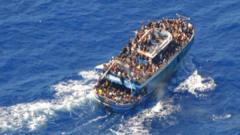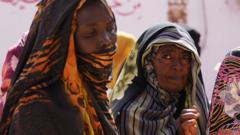More than 170 lives were tragically lost after a Jeju Air plane crashed while attempting to land at Muan International Airport in South Korea on Sunday morning. The Boeing 737-800, returning from Bangkok, was carrying 181 individuals when it veered off the runway, ultimately colliding with a wall. With 179 confirmed fatalities and only two crew members rescued from the wreckage, authorities are now delving into the circumstances surrounding the crash, with particular scrutiny on a potential bird strike and adverse weather conditions.
Deadly Plane Crash in South Korea: Investigations Focus on Bird Strike Theory
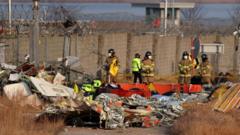
Deadly Plane Crash in South Korea: Investigations Focus on Bird Strike Theory
Tragedy strikes as hundreds mourn the deadliest aviation disaster in South Korea's history, with investigations underway into potential causes.
Local fire officials have indicated that the pilot received a warning about bird strikes prior to landing and made the decision to divert. According to reports, a passenger suggested that a bird may have lodged itself in the plane’s wing, contributing to the difficulties in landing. Eyewitness accounts detail a catastrophic scene where the aircraft struck the ground without landing gear, skidding and igniting into flames upon colliding with a wall.
During an emergency briefing, a leading fire chief mentioned that while the tail section of the aircraft remains recognizable, the rest of the plane was destroyed beyond identification. Though preliminary evaluations hinted at bird strike and weather as primary contributors, the definitive cause of the disaster remains under investigation as search teams have recovered vital flight data recorders.
With the flight being the most deadly in South Korean aviation history, the tragedy has sparked a national outpouring of grief. The victims included nationals as well as two Thai citizens. Tragically, five children, the youngest being just three years old, were among those lost. As recovery efforts continue, two flight crew members were rescued and taken to the hospital, bringing a glimmer of hope amid the devastation.
Acting President Choi Sang-mok has since declared a special disaster zone in Muan, allowing for government assistance to victims' families as they gather at the airport seeking information about their loved ones. Jeju Air’s management extended their condolences and affirmed that the airline had maintained a long-standing record of safety.
In memory of the deceased, the South Korean government announced a week of national mourning, a poignant reminder of lives lost in one of aviation's most somber chapters.
During an emergency briefing, a leading fire chief mentioned that while the tail section of the aircraft remains recognizable, the rest of the plane was destroyed beyond identification. Though preliminary evaluations hinted at bird strike and weather as primary contributors, the definitive cause of the disaster remains under investigation as search teams have recovered vital flight data recorders.
With the flight being the most deadly in South Korean aviation history, the tragedy has sparked a national outpouring of grief. The victims included nationals as well as two Thai citizens. Tragically, five children, the youngest being just three years old, were among those lost. As recovery efforts continue, two flight crew members were rescued and taken to the hospital, bringing a glimmer of hope amid the devastation.
Acting President Choi Sang-mok has since declared a special disaster zone in Muan, allowing for government assistance to victims' families as they gather at the airport seeking information about their loved ones. Jeju Air’s management extended their condolences and affirmed that the airline had maintained a long-standing record of safety.
In memory of the deceased, the South Korean government announced a week of national mourning, a poignant reminder of lives lost in one of aviation's most somber chapters.

